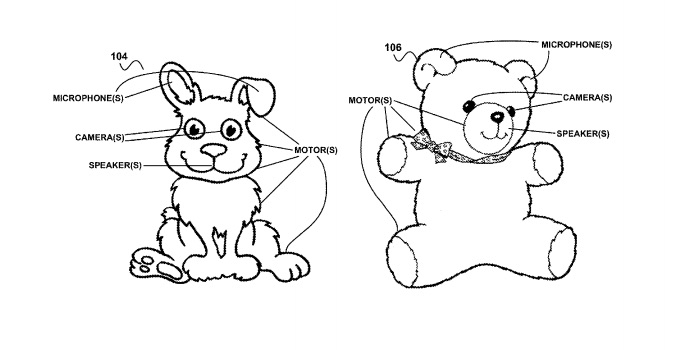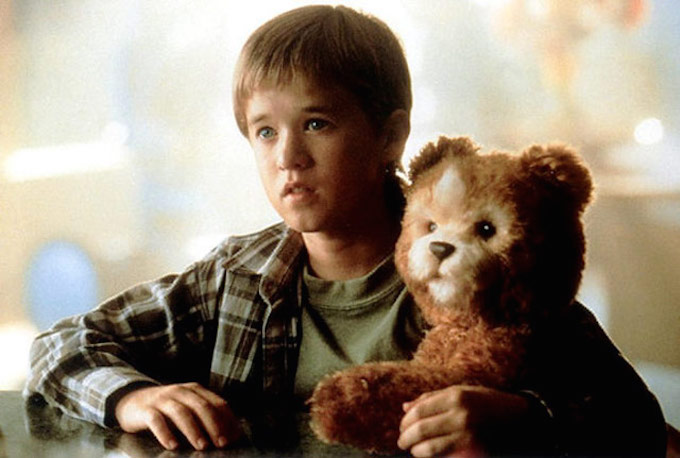
Google has patented creepy-looking toys that will interact with kids and help run the home.
The internet giant submitted an application to the United States Patent and Trademark Office back in February 2012 but it has only just been published.
The application includes a sketch of a toy rabbit and teddy bear showing where microphones, cameras, speakers and motors would be placed.
It then describes how a toy would be able to respond to commands and movements, by for example looking at a child who has spoken to it and responding to what was said by moving, tilting its head, making a sound, speaking, or changing its expression.
Google says: To express curiosity, an anthropomorphic device may tilt its head, furrow its brow, and/or scratch its head with an arm. To express boredom, an anthropomorphic device may defocus its gaze, direct its gaze in a downward fashion, tap its foot, and/or close its eyes. To express surprise, an anthropomorphic device may make a sudden movement, sit or stand up straight, and/or dilate its pupils.
They will also be able to close their eyes or simulate sleeping.

The patent application says toys would be connected to a WiFi or other wireless network in the home and would be able to carry out functions like turning lights off, or reducing he volume on home stereo systems.
It explains: Upon reception or detection of a social cue, such as movement and/or a spoken word or phrase, the anthropomorphic device may aim its gaze at the source. In response to receiving a voice command, the anthropomorphic device may interpret [it] and map it to a media device command.
The toys — which have similarities to the bear in 2001 Steven Spielberg movie AI — would have cameras for eyes and microphones in their ears, and the technology means that they could in theory be used to do things like keep an eye on children while parents are out and about, as well as perform mundane household tasks.

Google says dolls could also be fitted with the same technology, as well as other types of toys including those that resemble a human, an animal, a mythical creature or an inanimate object.
The patent application claims that as technology becomes more advanced, controlling home entertainment systems and other household gadgets may mean that some users might find using such systems to be too daunting or complex.
It adds: For example, if a user wants to watch a movie, he or she may have to decide which device displays the movie (e.g., a television or computer), which device streams the movie (e.g., a television, DVR, or DVD player), and whether the movie is streamed from a local or remote source (e.g., from a home media server or an online streaming service). If the media is streamed from a remote source, the user may need to also decide which of several content providers to use.
The toys could be used to simplify these tasks.


